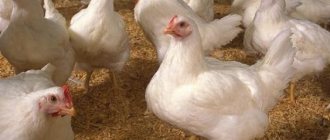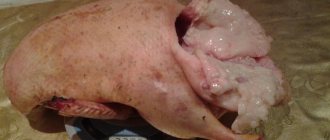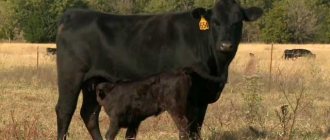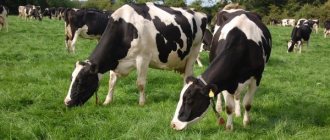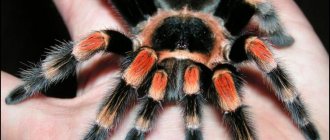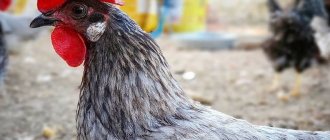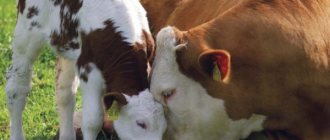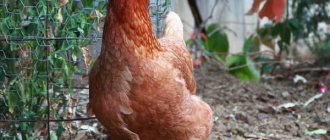Traditional raising of kids with their mother
Feeding goat kids is divided into periods depending on age and type of feed used. The first feeding of kids after lambing should be done within 30 minutes - colostrum builds immunity in young animals. The milking period lasts up to 10-15 days - the diet of the kids consists only of milk or a substitute, after which solid feed is gradually included in the feeding. The frequency of feeding is of great importance for raising strong and healthy young animals - for the first three days, kids should receive milk at least 5 times a day. The correctness of feeding a kid should be assessed by weight gain, quality of feces, and mobility of the young.
Feeding kids from the first days of life.
The basis of our method is abundant feeding of the kid in the first months of life.
“Lambing of a goat. Birth of kids. Afterbirth." HERE.
In all the literature on goat breeding, on the first day of a kid’s life, the daily milk allowance is 500g.
Our goats drank up to 600 g of milk at the first feeding (not colostrum, because they couldn’t start the goat before lambing).
During the day (IN THE FIRST DAY), a kid can drink up to 1900 g of milk . In this case, their intestines are quickly cleared of original feces (meconium) and the body receives a starting point for intensive work . This is a very important point.
By 30 days of age, the books recommend increasing daily milk consumption to 1200-1400 g. Our monthly goat kids drink 2500-2600 g of pure goat milk per day.
First feeding - the benefits of colostrum
Whatever method you choose to raise your goat, it is very important that as little time as possible passes from birth to the first feeding of colostrum. The maximum interval is 1 hour. The fact is that kids are born with a very weak immune system and are susceptible to many infectious diseases. Their blood does not yet have the necessary antibodies. It is with colostrum that the newborn receives not only the first portion of tasty and nutritious food, but also maternal antibodies to strengthen the immune system.
The second reason why you can’t do without colostrum is to “start” the digestive system. If a kid quickly receives colostrum, then the first to colonize its stomach and intestines are not harmful, but beneficial lactic acid bacteria, which not only prevent pathogens from multiplying, but also destroy them. In addition, they promote the release of original feces and good digestion.
How to feed newborn goats?
I would like to dwell on the desoldering technique. “How to milk a goat correctly?” - HERE.
Milk is offered only from a bowl. This allows you to control your milk intake at each feeding. So much milk is poured into the bowl so that it remains after the kid leaves the dishes. Not a single kid has ever had diarrhea, even though it fell off the bowl like a ball. For the first two or three feedings, you need to make sure that the kid’s nose does not plunge deeply into the milk, and he does not grab it with his nostrils. If this happens, then after two or three sneezes the baby will then figure out what’s what.
First, you need to bring the bowl to the muzzle and lightly press the goat’s head between the ears with your finger. Under no circumstances should you put him on his knees, as is sometimes recommended in the literature, and poke his nose into the bowl. The baby will perceive all this as violence against himself and will start a war with you. Then he will no longer have time to eat, and he will remember this fear for a long time.
Features of fattening weakened kids
Premature or weak babies who do not suckle themselves are fed milk using a syringe without a needle. Small portions of milk are squirted into the baby's mouth, encouraging it to swallow food.
Goats must be kept warm; sometimes a heating pad with hot water is placed in the cage. To increase the nutritional value of the diet, from the 5th day, milk can be replaced with baby food after one feeding.
Caring attitude towards young animals and proper care allow us to raise strong and productive animals.
How many times a day should goats be fed?
About the desoldering mode. For the first two days, the kid eats 6 times a day strictly every 4 hours. Milk should always be heated to 40 degrees.
Feeding a baby goat from a bowl.
On the third day, you can switch to feeding five times a day. The kid himself suggests this regimen, refusing the sixth feeding, or the last two or three feedings will drink sluggishly.
On the fifth or sixth day, after each feeding, his figure will look like the letter “F”. A belly will appear, which does not appear in underfed kids.
On the 7-8th day you can switch to feeding four times a day. The intervals between feedings should be equal. This is important because The kid should come hungry to the next feeding. Pouncing on a bowl of heated milk, he drinks eagerly. Having come to his senses, he raises his head and looks as if he is saying: “What have I done? I ate too much again!”
When traditionally fed or kept under a goat, kids grow flat, like a flounder. They have the athletic appearance of running animals. Dairy animals must have different dimensions.
Switching to roughage
Starting from the 5th day of life, the cubs begin to be fed with tender and fragrant hay. It is better to use meadow herbs. Bunches of grass are placed in wooden mangers or special nets called vendaces.
Hay should be in the goat's house at all times. At first, kids just pull blades of grass out of pampering, but gradually they learn to chew.
Feeding kids with concentrates begins on the 10th day. Bowls with dry feed or rolled oats are placed in free access, measuring 50–100 g of product per baby per day.
Video. Baby goat's first feeding.
It happens that a goat, running up to a bowl, refuses to drink milk. The main reason here lies in the underheating of the milk. Kids are very sensitive to this. It is imperative to warm up the milk and offer it to the kid again. I noticed that goats drink milk heated to 42-43 degrees faster and more than milk heated to 40 degrees. In the cold season, if the kids are fed in an unheated barn, the bowl of milk should be placed in another larger container filled with warm water. In this case, the milk will remain warm longer.
“A barn for keeping goats. Goat barn floors. Feeders for goats" - HERE
When the kid drinks milk, you can (and should) lightly stroke it on the back. This procedure increases the amount of milk you drink. Apparently, he thinks that they want to pull him away from the bowl. After the kid drinks, he needs to wipe his face with a dry, clean rag or soft hay. After two or three “washes”, the kid will stand and wait to have his face wiped and a few kind words said. Everyone loves affection.
Another point: the literature recommends introducing decoctions into the diet from 10 days of age. We never do this, because... a cereal or flour broth is already an “adult” food, and the digestive system of a 10-day-old kid is not yet able to digest it. Most often, after such food, kids develop diarrhea , as a result of which growth and development slow down. And this is not the worst option.
On the third or fourth day of life, the kid should be offered a rotten stump, gnawed by wood-boring beetles. It will happily eat soft wood and brown woodworm excrement. Thus, the kid populates its gastrointestinal tract with microflora, which, in the future, will process cellulose. Goats are arboreal and shrub animals and their diet must contain cellulose (bark or branches).
Lambing and first feeding
Usually the goat breeder watches the birth of his ward. Although goats give birth quickly and without complications, the presence of a person nearby helps to avoid unpleasant accidents. It is especially important to be present during the birth of first kittens. An inexperienced goat may accidentally step on the baby and not start licking it in time.
The newborn baby should be wiped dry with a clean cloth or a bunch of soft straw (hay). It is important not only to wipe the animal dry, but also to speed up blood circulation in the vessels with a vigorous body massage.
With a successful lambing, the newborn kid stands on its legs within half an hour after birth and tries to find its mother’s udder. Around this time it is necessary to feed the baby. The simplest and most accessible way is to place him near the mother's udder and make sure that he finds the nipple and drinks plenty of colostrum.
The first sips of healing colostrum are important for the kid. In the first hours after lambing, the product is rich in vitamins, enzymes, and biologically active substances.
Some inexperienced goat breeders are afraid to place newborns near the mother's udder for the first feeding. They are afraid that once the goat has accepted children, it will then not give milk to the person, and problems will arise with milking. But many years of practice show that a mother’s one-time feeding of her offspring does not in any way affect the process of future milking.
If the newborn goat receives the first portion of sterile colostrum directly from the mother's udder within an hour after birth, this will ensure that the immune system is strengthened.
When should you start feeding your baby goat hay?
From 10-11 days there should be good soft-leaved hay in the feeder. The kid, at first, does not eat it, but only savors it, licking various kinds of fungi and yeast from the surface of the leaves, which will also, in the future, take part in its digestion. At first, he spits out the licked leaves, and after 15-17 days he can already swallow some of the leaves he likes. After the 20th day of life, you can already see his belching. This suggests that the abomasum (the fourth section of the four-chamber stomach of ruminants) is slowly beginning to “wake up” in order to then accept “adult” food.
While walking, the kid is very interested in the moss growing close to the ground on the trunks of aspen, young oak, and blueberry trunks.
Gradually, the kid prepares to become an adult ruminant.
And in the literature, instead, it is proposed to attack the goat’s still unformed digestive system with chatterboxes and decoctions of porridges. This is fraught! The main food until one and a half months of age should be pure milk.
All the rest are options due to inferiority in the presence of milk, from ignorance , or from the greed of the owner, who prefers to drink this milk himself, or sell it.
The average weight of a 4-6 month old kid in the literature is determined to be 15-23 kg. Our one-month-old goats are accelerators , weighing on average 13 kg. Month-old goats weigh 20 kg or more. A six-month-old goat weighs 50 kg or more.
The maximum weight gain in goats is in the first month of life. It is important not to miss this time and in no case limit their diet . Then, with each subsequent month, weight gain occurs more slowly, although the babies continue to consume plenty of goat milk.
That is why it is important not to limit goats’ milk supply during this initial period of their life, otherwise they will never reach high levels of weight and milk yield. They will not be able to consume large quantities of food because... their digestive system will be less developed than that of an animal that was fed ad libitum with pure milk from the first hours of life until six months of age.
Natural method of raising young animals
Natural feeding (by the mother) allows kids to grow stronger and healthier, but at the same time there is a loss of dairy products and difficulties arise in working with animals. Most often, this technique is used on small farms where only a few goats are kept. However, owners of highly productive individuals with good milk yields are not recommended to use such technology.
Kids and queens are most often left together when breeding meat or down breeds that cannot boast of high milk yields. Here the farmer will lose practically nothing, but will simplify his work in terms of caring for livestock and replenish the herd with healthy, strong replacement goats.
Good to know. Newborn goats do not always begin to lead an active life from the first hours (stand on their feet, look for an udder, suck milk). If the young animals are weakly active, it is necessary to milk the goat to obtain colostrum and feed it to the newborn through the nipple. For the first time, you can give up to 10% of the weight of a small animal.
Being together with the uterus, the kid does not completely suck out all the milk products, especially for highly productive breeds. Milk remains in the udder, as a result of which the production of oxytocin (the hormone responsible for the production and release of milk) is reduced, and at the same time the separation of products. The result is a decrease in productive qualities. To prevent this from happening, goats must be milked from the first day after lambing.
To increase the productivity of the livestock at night, it is recommended to place kids with goats if rearing occurs during early weaning. The udder will empty overnight, but this practice can be implemented on a farm with a small herd.
From the age of one month, kids begin to accustom themselves to the food of adult animals. Initially, they are limited to liquid porridge and mash; you can use oatmeal with bran, and cook everything with milk or water. The food is placed in small bowls, which are placed next to the animals. The owner needs to clearly differentiate between feeding adult goats and young animals.
Natural feeding
If an increase in the herd occurs in the spring or summer, then green mass is used as the main feed. Young animals go out to pasture with their mothers, and gradually the animals independently learn to eat rough and succulent food.
To preserve the intensive growth of goat kids, they begin to be given grains and concentrates from the 30th day of life. The initial norm is 50 grams per day, gradually this amount increases by the same 50 grams every 10 days. It is recommended to feed grain feed in flattened, sprouted or crushed form. This way it is better absorbed by a young body, and the loss of nutritional components is almost invisible.
Weaning of young animals occurs at the moment when the kids are 60-90 days old; more precise dates depend on the breed characteristics. If the animals belong to the dairy sector, then the babies are weaned as early as 30 days, so that the productive qualities of adult animals do not decrease. Representatives of the meat and wool industries can be left with children for longer periods.
After the kids are weaned from their mothers, they must be left on milk feeding until four months of age, with a gradual decrease in the daily allowance. Young animals consume the maximum amount of dairy products per day in the middle of the 2nd month of life. Over time, milk begins to be replaced with mash, roughage and concentrates.
Feeding kids using the Sosnovsky method.
Our feeding technology, at first glance, seems expensive and troublesome. But, I assure you, after 6 months, having compared the results, you will no longer want to raise your kids any other way.
Your pets will differ in all respects for the better from goats raised in a different way. You will look at the neighbor's goats flattened on the sides with tears in your eyes, thinking about how she was underfed in childhood, trying to deceive her growing body with all sorts of chatterboxes, disrupting the baby's digestion and resorting to medications to save her from diarrhea.
It must be borne in mind that to raise one kid using our method, you need to have two wet-nurse goats in your yard, if your one goat is not able to fully provide the required amount of milk.
A three-month-old goat is able to drink up to seven liters of milk per day, but at this age three liters will already be enough for her to add to the adult food, which she is already able to process in huge quantities. “What to feed a goat in winter?” - HERE .
“The goat lost its cud—the rumen stopped. Tympany of goat rumen." - HERE.
At what age can a goat be covered?
Goats, fed plenty of milk from a bowl since childhood, are ready for covering after 4-5 months. And not in a year and a half, as almost all literature recommends.
This late coverage is due to slow growth due to the lack of normal food provided by nature , i.e. pure mother's milk. Now all representatives of the human race are fed formulas that ruin the health of our future generations. But this is another topic and it’s not for us to decide. Everything has been decided for us a long time ago...
We covered our kids at four to five months of age. At the time of mating, goats weigh 40-42 kg. At 9 months they became mothers and a month after lambing (10 months old) we milked 4.2 liters of milk per day from such a goat.
Ours, one goat, had her first heat at 97 days of age. This suggests that good feeding reduces the period of single (unprofitable) keeping. The goat's reproductive cycle is 17-23 days. The hunt lasts 36 hours. Nowadays, goat breeders who feed their kids from a bowl to their heart's content also cover early.
Usually, we skip the first hunt, and cover the second . I think that goats raised using our method should be covered without too much delay, because... In them, all the energy produced by large quantities of feed can go into obesity. The ovaries may fail and the fertility of such an individual will be very problematic.
Diet for the first days of life - milk period
It is better to use colostrum for feeding goats up to 7-10 days. In this case, it is advisable to harvest colostrum from goats obtained in the first 2-3 days after lambing. At this time, colostrum contains the greatest amount of antibodies and nutrients, and from the fourth day it differs little from regular milk. Colostrum can be frozen, and when feeding the kid, heated in a water bath. You can store the product if there is an excess of it - the goat has good productivity, a small number of young animals.
Drinking standards vary
Daily feeding scheme for young animals - one-time supply of colostrum with five feedings:
- 100 ml;
- 120 ml;
- 140 ml;
- 160 ml;
- 180 ml;
- 210 ml;
- 240 ml;
- 270 ml;
- 300 ml.
From the tenth day, additional feed can be included in the diet of goat kids. Usually they start with a mash of oat or wheat bran, or liquid oatmeal. A single dose is 200 ml, while the amount of milk does not change. The chatter allows you to save on milk (replacement milk), and also prepare the kid for a change in feeding.
Feeding devices
The kids are fed through bottles and buckets with nipples. Cups and troughs should not be used to feed newborns - the body of young animals is not adapted to such nutrition and swallows milk in large portions. This leads to the formation of a curdled mass in the digestive system, which is accompanied by diarrhea and exhaustion. It is especially dangerous when feeding is rare - the kids greedily cling to the trough, drinking large portions.
For feeding, you can use regular baby bottles for milk and formula, which are sold in pharmacies or baby stores. But it is difficult to serve a large population with one bottle, so it is better to use special buckets with nipples attached through which the kids suck the swill.
This bucket for feeding kids allows better development of the sucking reflex and prevents them from swallowing milk in large portions.
On large dairy farms, feeding newborn goats with milk replacer is carried out using special machines. They are a tank in which the mixture is dissolved and heated to the desired temperature. Tubes extend from it, the ends of which are connected to the cages with the kids. At certain intervals, kids can drink the substitute through a nipple. The machine regulates the volume of food and the frequency of feeding, which makes it easier to work with large livestock, but most importantly, it allows you to increase the frequency of milk supply, which has a better effect on digestion.
Comparison of feed for newborn goats
| Type of feed | Fat, % | Protein, % | Peculiarities | Cost, rub./kg |
| Whole goat milk | 3,6 | 3,2 | Best for kids | 40-80 |
| Whole cow's milk | 3,4 | 3,2 | Digests worse than goat | 20-40 |
| Powdered milk (MP) | 25 | 25,5 | Inadequate vitamin and mineral composition | 160-200 |
| Replacement milk for kids "Felucen" | 12 | 22 | Contains vegetable fats | 100-120 |
| Food fusion for kids | 4,5 | 12 | Poor profitability | 500-2000 |
Goat's milk is best suited for feeding goat kids - it is perfectly digestible, does not cause nutritional disorders, and has a balanced composition. Cow's milk, due to the peculiarities of its protein composition, is less digestible, and this also happens with various mixtures - special milk replacer, powdered milk or baby food, which you can see in goat's milk for feeding kids.
All milk replacers for kids contain vegetable fats - this makes them cheaper, but also worse for the digestive system. What kind of milk replacer do you use?
The main advantage of feeding goat kids with a substitute is its cost. In the production of milk replacer, plant components are used, which makes it significantly cheaper than goat milk, which can be sent from a lambing goat for sale. But for the first 10-15 days, be sure to feed the kids milk.
The transfer to SCM or other mixtures should be gradual. A complete change of diet occurs in 5 days - every day 20% of the milk is replaced with a diluted mixture. It is worth adding Vitom or another probiotic to the resulting drink.
